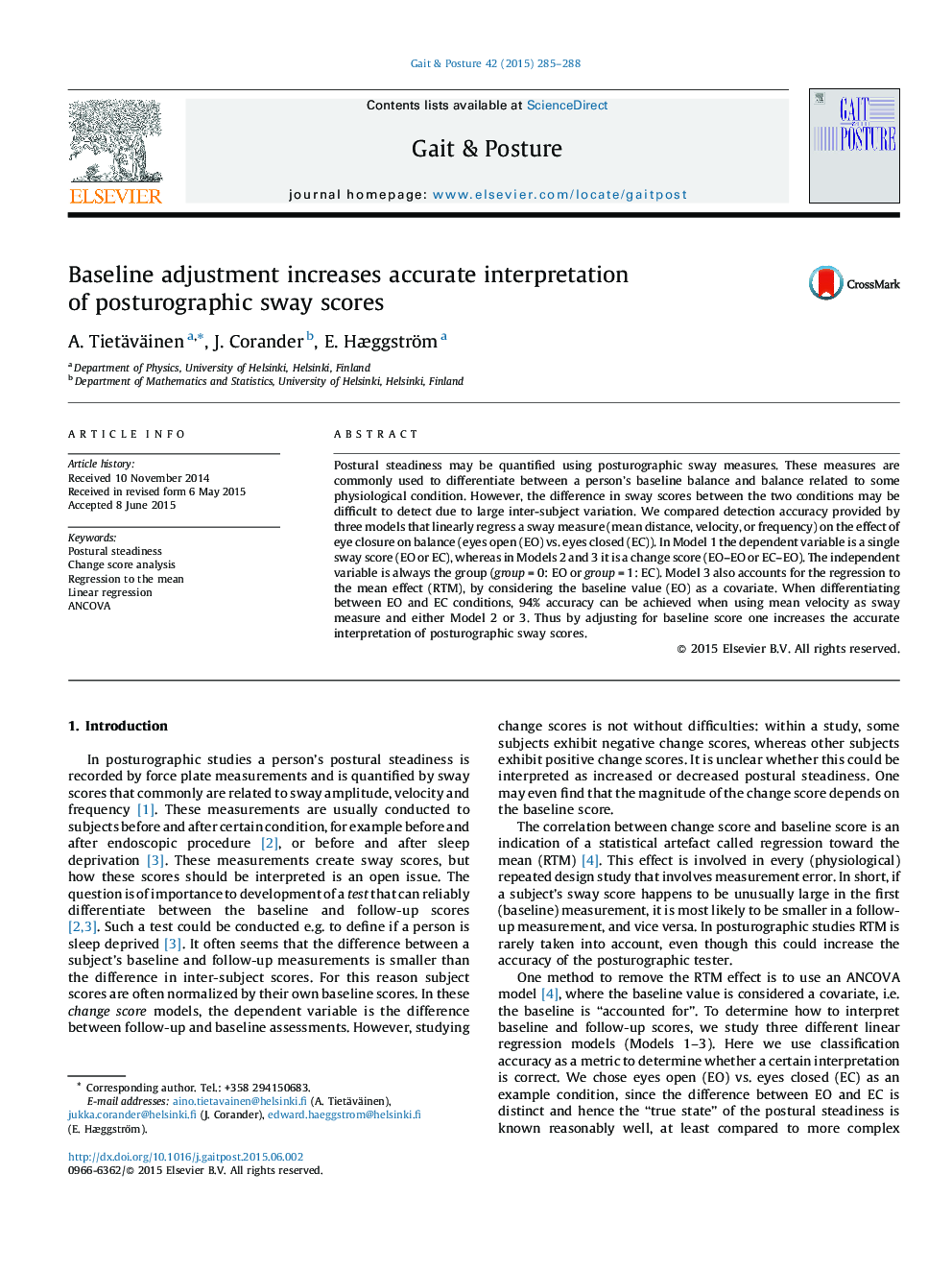| Article ID | Journal | Published Year | Pages | File Type |
|---|---|---|---|---|
| 6205559 | Gait & Posture | 2015 | 4 Pages |
â¢Regression to the mean affects studies with repeated measures design.â¢We measured 62 subjects' postural steadiness with eyes open (EO) and closed (EC).â¢Postural sway was quantified by its amplitude, velocity and frequency.â¢We compared three linear regression models on how to interpret the sway scores.â¢Adjusting for baseline score increases the detection accuracy between EO and EC.
Postural steadiness may be quantified using posturographic sway measures. These measures are commonly used to differentiate between a person's baseline balance and balance related to some physiological condition. However, the difference in sway scores between the two conditions may be difficult to detect due to large inter-subject variation. We compared detection accuracy provided by three models that linearly regress a sway measure (mean distance, velocity, or frequency) on the effect of eye closure on balance (eyes open (EO) vs. eyes closed (EC)). In Model 1 the dependent variable is a single sway score (EO or EC), whereas in Models 2 and 3 it is a change score (EO-EO or EC-EO). The independent variable is always the group (group = 0: EO or group = 1: EC). Model 3 also accounts for the regression to the mean effect (RTM), by considering the baseline value (EO) as a covariate. When differentiating between EO and EC conditions, 94% accuracy can be achieved when using mean velocity as sway measure and either Model 2 or 3. Thus by adjusting for baseline score one increases the accurate interpretation of posturographic sway scores.
